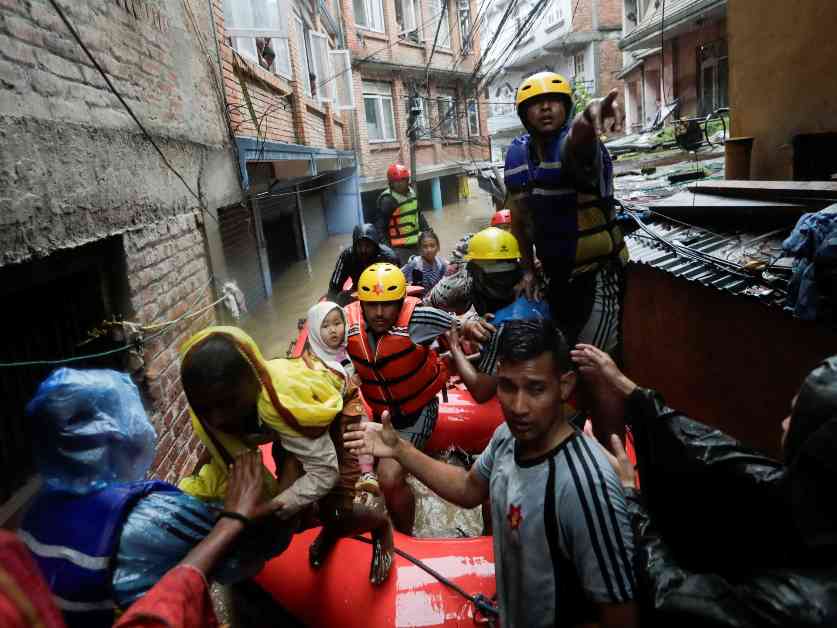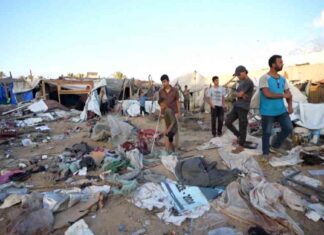Nepal Devastated by Deadly Floods and Landslides
Nepal is reeling from the devastating impact of deadly floods and landslides that have claimed the lives of at least 32 people and left 12 others missing. The incessant rains that have battered the country over the past 24 hours have triggered widespread destruction, particularly in areas like Kathmandu, where floodwaters have inundated homes and roads. The government has mobilized over 3,000 security personnel to aid in rescue efforts, using helicopters and motorboats to reach those stranded by the natural disasters.
Rescue Efforts Underway
Authorities are working tirelessly to rescue and locate missing individuals, with police collaborating with other agencies and local communities to provide assistance. Basanta Adhikari, a spokesperson for Nepal’s National Disaster Risk Reduction and Management Authority, emphasized the importance of joint efforts in responding to the crisis. The challenging conditions have made it difficult for rescue teams to reach all affected areas, but they remain committed to saving as many lives as possible.
One eyewitness, a truck driver named Hari Malla, recounted the harrowing experience of waking up to find floodwaters rising rapidly around him. The water had already reached up to his shoulders, submerging his entire truck. Malla’s story serves as a stark reminder of the sudden and destructive power of natural disasters, leaving individuals like him with little time to respond before being engulfed by the rising waters.
Impact on Transportation and Infrastructure
The floods and landslides have also had a significant impact on transportation and infrastructure in Nepal. All domestic flights out of Kathmandu have been cancelled since Friday evening, affecting more than 150 departures. While international flights are still operational, the disruption to domestic travel has caused inconvenience and uncertainty for travelers. In addition, landslides have blocked highways at 28 locations, prompting police to work diligently to clear debris and reopen roads to traffic.
The government’s response to the crisis has been swift and coordinated, with officials working to address the immediate needs of affected communities while also planning for long-term recovery efforts. However, the challenges posed by the ongoing rains and the potential for more flash floods in multiple rivers continue to test the resilience of Nepal’s disaster response mechanisms.
Climate Change and Increasing Vulnerability
Experts have pointed to climate change as a key factor exacerbating the frequency and intensity of rainfall in Nepal, leading to more frequent and severe flooding and landslides. This year alone, over 170 people have lost their lives in rain-related disasters, underscoring the urgent need for proactive measures to mitigate the impact of extreme weather events. The Koshi River, which flows through Nepal and into India’s Bihar state, has reached dangerous levels, posing a threat to communities on both sides of the border.
In the face of these challenges, it is essential for governments, communities, and international partners to work together to build resilience and adapt to the changing climate. By investing in early warning systems, infrastructure improvements, and community preparedness, countries like Nepal can reduce the risk of loss of life and property during natural disasters. The current crisis serves as a stark reminder of the need for proactive and coordinated action to protect vulnerable populations and safeguard the environment for future generations.



























